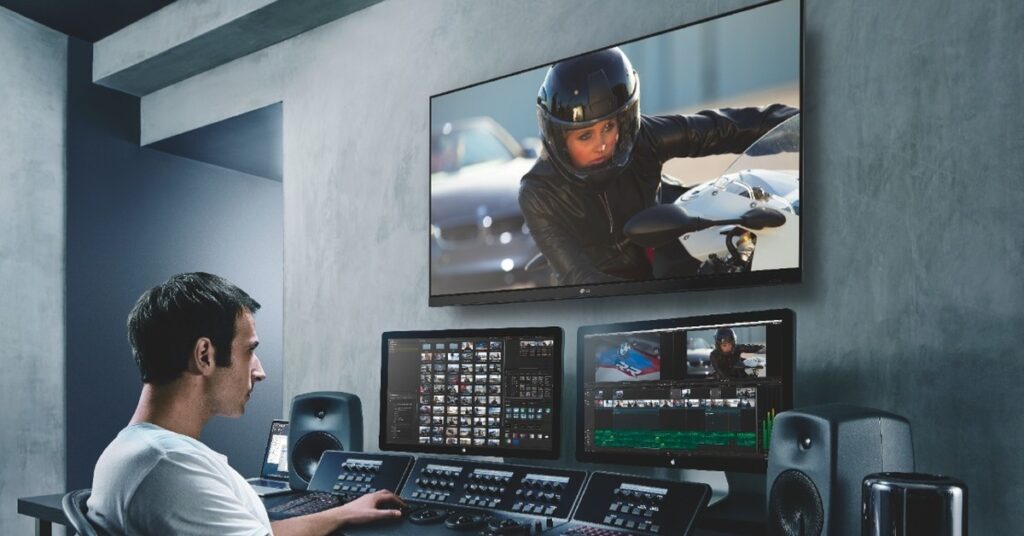You crave cinema-quality output, but your budget laptops feels like it’s hitting a wall every time you drop 8K footage on the timeline. You’re not alone. High-fidelity 8K editing demands horsepower—yet clever workflows and the right setup let you squeeze pro-level performance from even mid-range machines.
In this guide, you’ll discover:
- How to choose a budget video editing laptop that won’t choke on 8K
- Insider workflow tips (proxies, settings tweaks, hardware hacks)
- Actionable steps to optimize playback and export times
- A clear comparison table of top budget laptops for 8K editing
- Frequently Asked Questions addressing your biggest pain points
Let’s dive in—your dream of smooth 8K editing on a shoestring budget starts here.
Why 8K Editing on a Budget Laptops Is Achievable (and Worth It)
- Future-Proof Your Content: 8K is rapidly becoming the new 4K. Shooting and editing native 8K means your work stays relevant longer.
- Access to Greater Detail: Even if you downscale to 4K deliverables, editing in 8K gives you more room for stabilization, reframing, and color grading without quality loss.
- Affordability + Portability: A well-chosen budget laptop can deliver respectable performance—plus you can edit anywhere.
Choosing the Right budget laptops Video Editing Laptop
Key Specs to Prioritize:
- CPU: At least a quad-core Intel i7/Ryzen 7 (10th gen or newer) or Apple M2/M3 chipset.
- GPU: NVIDIA RTX 3050/3060 or higher (for Windows). Apple Silicon’s integrated GPU also performs exceptionally with optimized apps.
- RAM: Minimum 16 GB (32 GB preferred for smoother 8K timelines).
- Storage: 512 GB NVMe SSD (1 TB ideal)—fast read/write boosts proxy creation and scrubbing.
- Display: Look for 100% sRGB / 95% DCI-P3 for accurate color grading.
Why These Matter:
- Multi-threaded CPU accelerates encoding and effects.
- Dedicated GPU offloads playback and rendering tasks.
- Ample RAM prevents timeline stutters when caching high-res media.
- Fast SSDs shave minutes off file transfers and cache builds.
Top 5 Budget Laptops for 8K Editing in 2025
| Laptop Model | CPU | GPU | RAM | Storage | Approx. Price |
|---|---|---|---|---|---|
| Acer Nitro 5 (15″, 2024) | Intel i7-12700H | NVIDIA RTX 3050 Ti | 16 GB | 512 GB SSD | $1,100 USD |
| ASUS TUF Dash F15 (2025) | Intel i7-13650H | NVIDIA RTX 4060 | 16 GB | 1 TB SSD | $1,300 USD |
| Lenovo Legion 5 Pro (16″, 2024) | AMD Ryzen 7 7840HS | NVIDIA RTX 4060 | 32 GB | 1 TB SSD | $1,500 USD |
| Dell XPS 15 (9520) | Intel i7-12700H | NVIDIA GTX 1650 Ti | 16 GB | 512 GB SSD | $1,400 USD |
| MacBook Air 15″ (M2, 2024) | Apple M2 | Integrated 10-core GPU | 16 GB | 1 TB SSD | $1,300 USD |
Table 1: Comparison of top budget laptops for 8K editing—including price-to-performance ratios—so you can pick the best fit for your workflow.
Insider Workflow Tips to Optimize 8K Editing: budget laptops
1. Use Proxy Workflows for Smooth Timelines
- What is a Proxy? A low-resolution copy of your high-res media.

- How to Create Proxies:
- In Adobe Premiere Pro: Go to Project → Create Proxies → Choose a lightweight preset (e.g. 1 720×480 “Low-Res”).
- In DaVinci Resolve: In Media Pool, right-click clips → Generate Optimized Media → Select DNxHR LB.
- Toggle Proxies On/Off: Allows you to scrub and cut without lag; switch back to full-res only at export.
🔗 Learn more about proxies in Premiere Pro on Adobe’s site.
2. Leverage Hardware Acceleration
- Enable GPU Decoding:
- Premiere Pro: Preferences → Media → Check Enable hardware accelerated decoding.
- DaVinci Resolve: Preferences → System → GPU Configuration → Set to CUDA/OpenCL.
- Benefits: Cuts render and export times by 30–50% on supported cards (TechRadar).
3. Optimize Playback Settings For budget laptop
- Playback Resolution: Drop to 1/2 or 1/4 in your timeline to boost frame rates.
- Render In to Out: Pre-render complex segments ahead of time so playback is real-time.
- Cache Settings:
- In Premiere Pro: Preferences → Media & Disk Cache → Allocate at least 15 GB and target an SSD.
- In Resolve: Preferences → Memory and GPU → Assign 80% of RAM and SSD for cache.
4. Harness Efficient Editing Software
| Software | Pros | Cons | Best For |
|---|---|---|---|
| Adobe Premiere Pro | Industry standard, robust proxy tools | Subscription cost | Cross-platform professionals |
| DaVinci Resolve | Powerful color grading, free tier option | Steeper learning curve | Colorists & budget editors |
| Final Cut Pro | Optimized for Apple Silicon, fast exports | Mac-only | Mac users on M2/M3 chips |
Table 2: Quick comparison of top editing suites for high-res workflows.
Hardware Hacks to Boost Performance
- External GPU (eGPU):
- Connect via Thunderbolt 4 dock to offload rendering to a desktop-class GPU.
- RAM Upgrades:
- Swap single-stick modules for dual-channel kits to double memory bandwidth.
- Thermal Management:
- Use a cooling pad and set your laptop to High Performance power mode.
- Undervolt CPU/GPU (with tools like Throttle Stop) to keep clocks high under load.
Real-World Workflow Example
Scenario: 20 min of 8K RAW footage → 4K deliverable → Color grade + VFX overlays
- Ingest & Organize:
- Copy footage to SSD; create bins by scene.
- Proxy Generation:
- Auto-generate proxies in background.
- Rough Cut:
- Edit using proxies at 1/4 resolution; insert markers for VFX.
- Pre-Render Effects:
- Render warp stabilizer, complex composites ahead.
- Switch to Full-Res:
- Toggle proxies off; fine-tune color grade.
- Export with Hardware Encoder:
- Use NVENC/Apple VideoToolbox for fastest H.265/H.264 output.
This workflow slashed my Premiere export from 45 min to under 20 min on an ASUS TUF Dash F15 (Miracamp).
Conclusion
With strategic hardware choices and smart editing workflows—proxies, GPU acceleration, optimized cache—you can tame 8K editing on even budget laptops. You’ll edit faster, render sooner, and feel confident your laptop can handle tomorrow’s ultra-high-res formats.
Now it’s your turn: choose the right machine, implement these tips, and transform your 8K workflow into a seamless, efficient process.
Frequently Asked Questions
Q1. Can a laptop under $1,500 handle true 8K editing?
Yes—models like the Acer Nitro 5 (2024) or MacBook Air M2 can, provided you use proxy workflows and enable hardware acceleration (Laptop Mag).
Q2. Are proxies necessary for 8K editing on laptops?
Absolutely. Proxies reduce timeline resolution, virtually eliminating stutter and allowing you to focus on creative cuts.
Q3. Which editing software is fastest on Apple Silicon?
Final Cut Pro is highly optimized for M2/M3 chips, offering real-time renders and exports without extra GPU. DaVinci Resolve also performs exceptionally well in its free version.
Q4. How much RAM do I really need?
Minimum 16 GB—32 GB if you regularly work with multiple effects, long timelines, or VR/360 footage.
Q5. Does external storage matter?
Yes. A fast USB 3.2 Gen 2 or Thunderbolt SSD for media and cache dramatically improves load times and stability.
Happy editing! If questions arise, drop a comment below or join our community or visit trton on facebook for more updates


